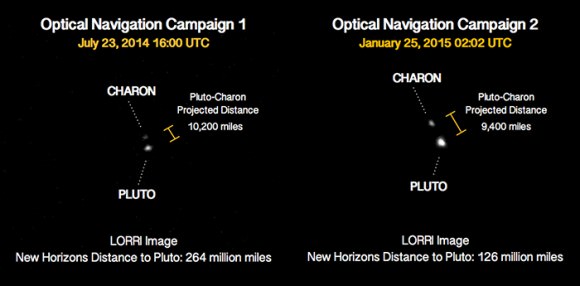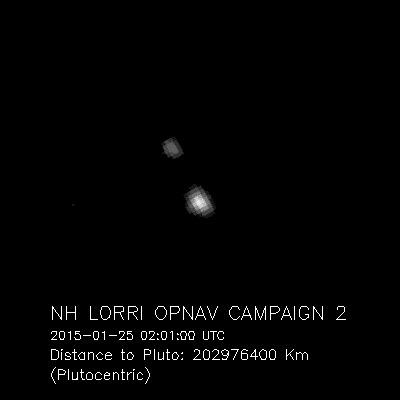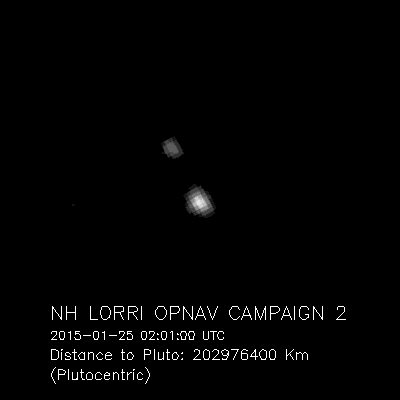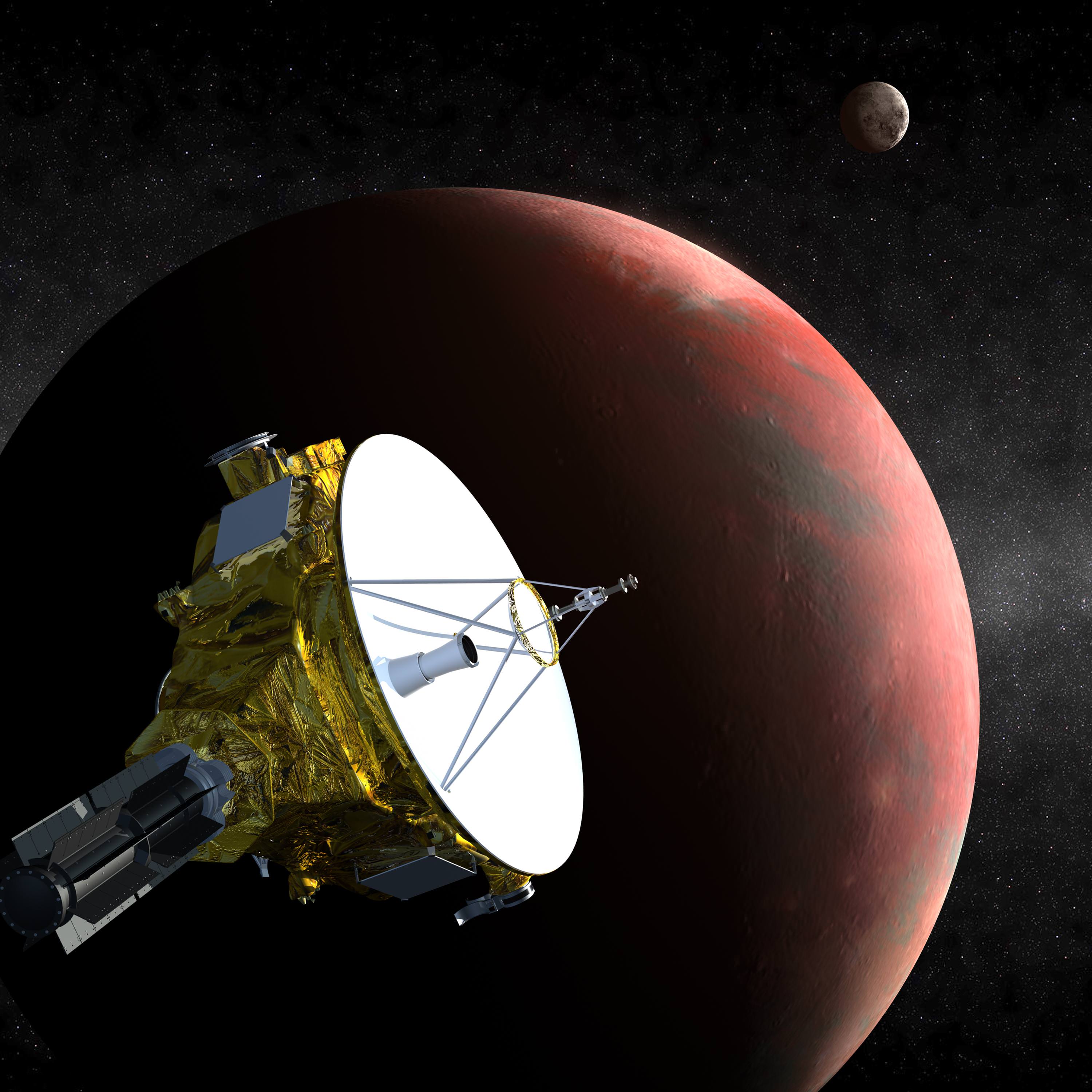Here we go! New Horizons is now on approach and today – on the anniversary of Pluto discoverer Clyde Tombaugh’s birth – the spacecraft has sent back its first new images of the Pluto system. The images aren’t Earth-shattering (Pluto-shattering?) but they do represent the mission is closing in on its target, and will allow the New Horizons engineers to precisely aim the spacecraft as it continues its approach.
The photos were taken with the telescopic Long-Range Reconnaissance Imager (LORRI) on January 25 and 27, 2015.
“Pluto is finally becoming more than just a pinpoint of light,” said Hal Weaver, New Horizons project scientist. “LORRI has now resolved Pluto, and the dwarf planet will continue to grow larger and larger in the images as New Horizons spacecraft hurtles toward its targets. The new LORRI images also demonstrate that the camera’s performance is unchanged since it was launched more than nine years ago.”

New Horizons was about 203 million kilometers (126 million miles) away from Pluto when it began taking images. Pluto appears as a pixelated smudge, and New Horizons is only close enough so that just Pluto and its largest moon, Charon are visible. In this current view from LORRI, Pluto is about 2 pixels and Charon is 1, compared to 1 pixel and 0.5 pixels last July. The images were magnified four times to make Pluto and Charon more visible.
NASA says that over the next few months, LORRI will take hundreds of pictures of Pluto, against a starry backdrop, to refine the team’s estimates of New Horizons’ distance to Pluto. As in these first images, the Pluto system will resemble little more than bright dots in the camera’s view until late spring. However, mission navigators can still use such images to design course-correcting engine maneuvers to direct the spacecraft for a more precise approach. The first such maneuver based on these optical navigation images, or OpNavs, is scheduled for March 10.

Image Credit:
NASA/JHU APL/SwRI
Closest approach for the spacecraft will be on July 14.
These first images represent a milestone.
“These images of Pluto, clearly brighter and closer than those New Horizons took last July from twice as far away, represent our first steps at turning the pinpoint of light Clyde saw in the telescopes at Lowell Observatory 85 years ago, into a planet before the eyes of the world this summer,” said Alan Stern, New Horizons principal investigator. “This is our birthday tribute to Professor Tombaugh and the Tombaugh family, in honor of his discovery and life achievements — which truly became a harbinger of 21st century planetary astronomy.”
During its flyby, New Horizons will be characterizing the global geology and topography of Pluto and Charon, mapping their surface compositions and temperatures, examining Pluto’s atmospheric composition and structure, studying Pluto’s smaller moons, and searching for new moons and rings.



